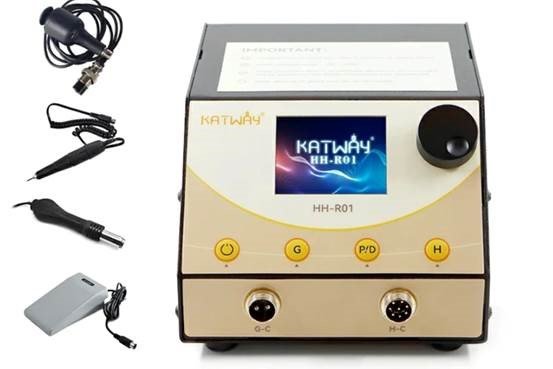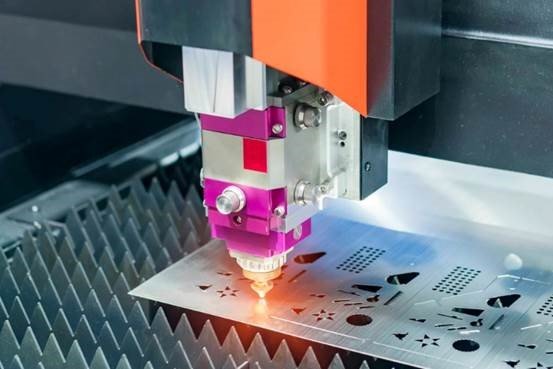Nowadays, pneumatic engraving machines have begun to replace traditional manual engraving and ordinary electric engraving machines, becoming the engraving method of choice for most people. However, due to lack of understanding of pneumatic engraving machines, many people are inevitably confused about which pneumatic engraving machine is most suitable for them. This review selects three popular pneumatic engraving tools on the market—Ingersoll Rand, WYMA, and Katway—and introduces you to more information about pneumatic engraving machines. Understanding them can help you make a better choice. Let’s start your pneumatic engraving journey together.
Learn about Pneumatic Engraving Machines
Pneumatic engraving machines rely on compressed air to drive the spindle at high speeds, converting it into a power source that propels the engraving tool to complete the engraving. Compared to common electric engraving machines, pneumatic engraving machines lack a built-in motor, making them lighter and more convenient. Even at high speeds, they don’t generate the same excessive heat as electric engraving machines, making them ideal for tools that require extended engraving. Furthermore, most pneumatic engraving machines have very fast speeds, reaching tens of thousands of revolutions per minute, making them ideal for detailed engraving on hard materials like metal or jade. Furthermore, their daily care and maintenance are relatively simple due to their simple internal structure; routine cleaning and regular lubrication can ensure a long lifespan.
Measured Performance of 3 Engraving Tools
Ingersoll Rand
Features:
l Globally renowned brand: Guaranteed quality, pneumatic tools are made of durable metal materials and have a well-established global parts and repair network.
l Suitable for industrial workshops: The impact-resistant and corrosion-resistant design of the tool housing, gears, bearings, and other components makes it suitable for high-frequency workshop use.
l Stable power output and precise control: Industrial-grade calibrated speed and airflow ensure stable output while maintaining high speeds.
Advantages:
l High durability: Mature materials and craftsmanship make it suitable for long-term, continuous use in industrial workshops.
l Wide adaptability: Capable of everything from fine engraving to medium-duty sanding (especially the EP series, which is particularly suitable for fine engraving).
l Complete brand and after-sales network: Easy access to genuine parts and repair support.
Disadvantages:
l Price and Cost: Procurement costs are high; local prices for industrial-grade parts and repairs are also relatively high.
l High air source requirements: A stable compressed air system is required to provide clean air; without a suitable air source, performance will be limited.
l Heavyweight: More suitable for industrial engraving machines, not for fine-grained work.
Purchasing Recommendations:
Suitable for factories and professional engravers who require long-term, high-volume production.
WYMA
Features:
l Entry-level to mid-range market positioning: Weimar manufacturers offer pneumatic tools in a variety of shapes, collet sizes, and speed ranges, suitable for entry-level to mid-range engravers.
l Simple and practical design: Their products feature lightweight, easily replaceable grinding heads, and standardized installation, facilitating interoperability with third-party accessories. Their design and grip are often economical and practical, making them easy for beginners to use.
Advantages:
l Price difference: Compared to international brands, Weimar is more affordable, offering both performance and price advantages, making it more cost-effective.
l Various models: A wide range of models and shapes allows engravers to choose the right tool for their specific needs.
l Easy to replace: Most products use standard grinding heads, making it easy for customers to replace accessories.
Disadvantages:
l High quality fluctuation: As an economical product, batch quality and bearing life may vary.
l Average noise control: Low-priced designs often invest less in vibration and noise suppression, which can significantly impact the engraver’s hearing during extended periods of operation.
Purchasing Recommendations:
Suitable for studios on a budget, craft enthusiasts, or beginners. There are a wide variety of models, and you can choose according to your usage scenario needs, without having to worry about replacing accessories after they are damaged.

Katway
Features:
l Suitable for jewelry engraving: Finely positioned engraving of jewelry. The overall size is smaller, offering enhanced feel, pen tip precision, and speed controllability.
l Multifunctional Integration: Katway’s models combine a traditional engraving pen, a micromotor, and a thermal device into a single machine, enabling jewelers to perform a variety of fine work on gold, silver, titanium, stainless steel, and even wood/bone.
l No External Compressor Required: For example, the HH-R01 model does not require an external air compressor; instead, it has a small built-in air source, reducing reliance on external air. This makes it more convenient to use while retaining the characteristics of a pneumatic engraver.
Advantages:
l Convenience: The lack of an external air compressor makes installation simpler, making it suitable for smaller studios and individual engraving enthusiasts.
l Fine-tuned blade and speed control: Designed specifically for the jewelry industry, these blades and speed control are more tailored to the needs of micro-carving, inlay edge trimming, and other applications.
l Functional integration: Reduces switching time between multiple devices, improving efficiency for small-batch, multi-process processing.
Disadvantages:
l Positioning differences: Equipment designed for positioning jewelry engraving may not be suitable for other materials. Because its performance emphasizes precision, it may be more expensive than other equipment.
l Power differences: Designed without the need for an external air compressor, it relies on a small internal air source or uses a motor to replace some pneumatic functions. This makes it suitable for fine jade engraving in the jewelry industry, but may not meet the requirements of industrial-grade pneumatics.
l Maintenance ease: Niche professional equipment may have limited repair locations in the event of a malfunction, and replacement parts may not be as readily available as those from major brands.
Purchasing Recommendations:
Ideal for jewelry studios, custom jewelry shops, jewelry restoration, and educational settings. If you need high-precision single-piece machining, prototyping, or finishing in a desktop environment, products like the Katway are worth considering.
Usage and Maintenance Tips
Pneumatic engraving machines are more difficult to use than electric ones, so mastering their usage and maintenance techniques is crucial for optimal performance.
Operate the pneumatic engraving machine correctly based on the characteristics of each model. Avoid excessive force during operation, and follow the grain of the material to minimize damage. Also, ensure regular maintenance and upkeep, adding lubricant regularly to keep the air flow clear. Clean debris promptly after use to keep the machine clean.
Summary
As pneumatic engraving machines become the ultimate tool for engraving, choosing the right model becomes increasingly important. Whether you’re a hobbyist or a professional craftsman working in a studio, choosing the right engraving machine for your needs is crucial. If you’re working in the jewelry industry, don’t miss out on Katway’s pneumatic engraving machines. If you’re looking for the reliability of a reputable brand, Ingersoll Rand is your best bet. Finally, proper use and regular maintenance are the best ways to extend your engraving tool’s lifespan, making it your ultimate companion.

